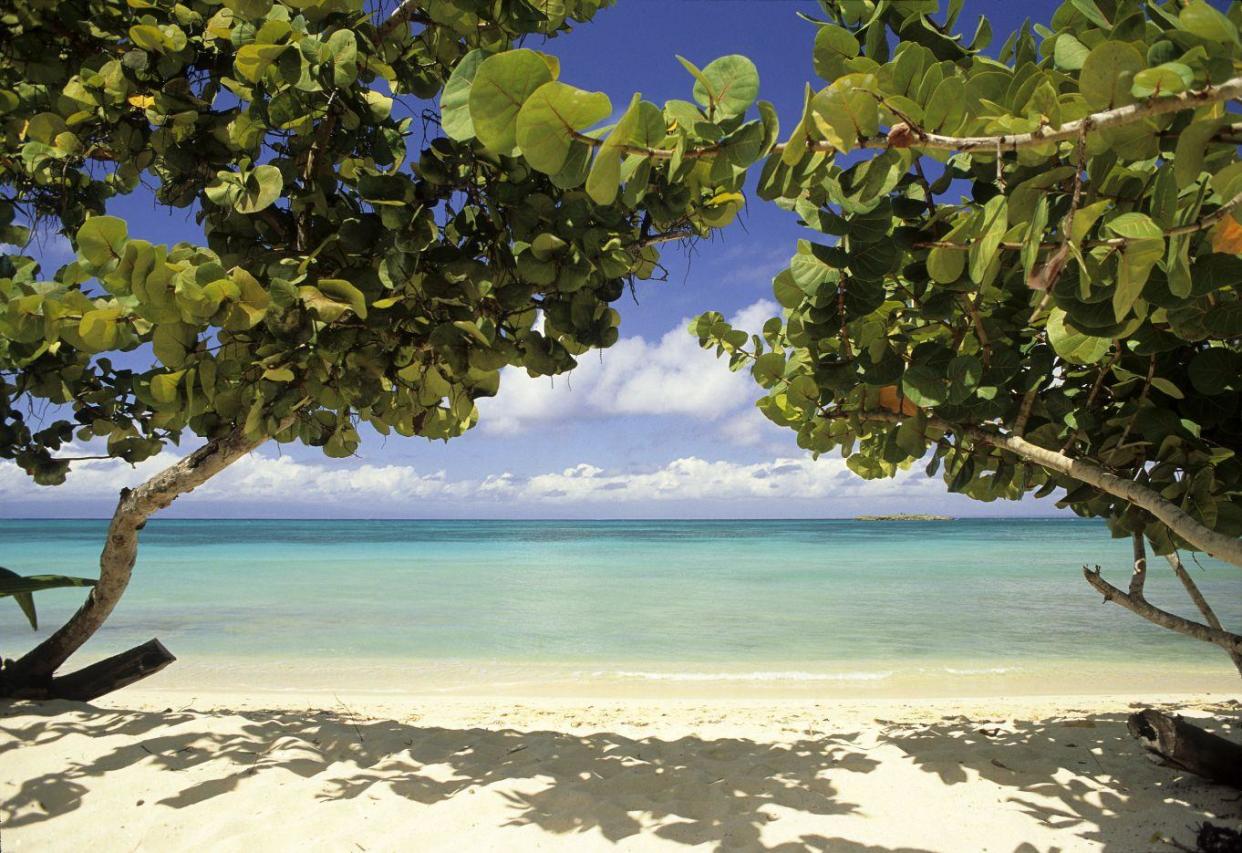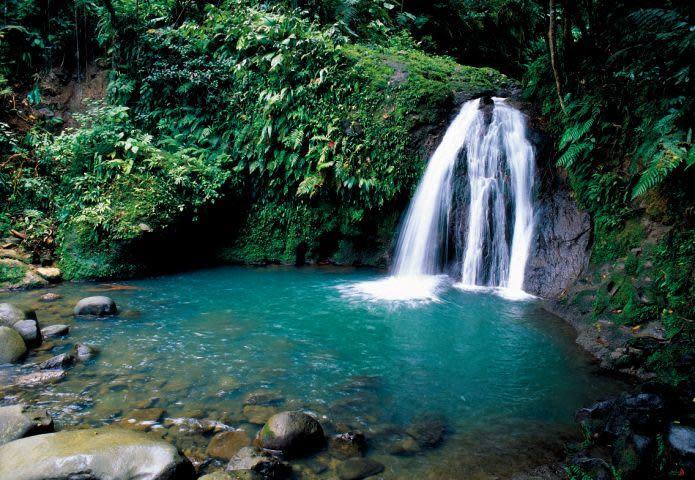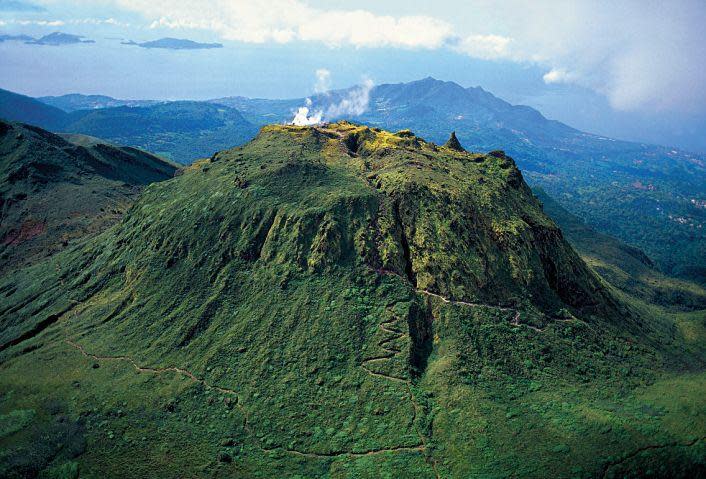Guadeloupe: a paradise found, with a French twist

Clinging to a wet rope, trainers slipping and sliding on increasingly slick mud, I had my eyes fixed on the neoprene-clad bum in front of me. I was trying, painfully, to haul myself up the side of a canyon while the rain lashed down. It was a world away from the palm-fringed beach I had arrived at just hours before.
Thanks to its ecological diversity, Guadeloupe has micro-climates that mean in one day you could be in a lush rainforest, on an active volcano and swimming with turtles in tranquil azure waters under blue skies.
Guadeloupe, like Martinique, is an overseas department of France in the Lesser Antilles. Its laid-back Caribbean style layered with strong French influences is irresistible, particularly for adventurous travellers keen to get out of resorts and closer to nature.
It’s also comparatively under-the-radar. While Guadeloupe does attract some fans of Death in Paradise, the BBC crime-drama series filmed on the island, most Britons tend to head to former colonies including Barbados, Antigua and Jamaica, where they get their beach and rum-punch fix in luxury resorts. There are no direct flights from London — you’ll need to change in Paris — but that is a small annoyance for the reward after an eight-and-a-half-hour flight.
Of Guadeloupe’s five islands, Basse-Terre to the west and Grand-Terre to the east are the biggest, with three smaller islands, La Désirade, Les Saintes and Marie-Galante, clustered around them. Volcanic Basse-Terre is where you’ll find the rainforest, waterfalls, hot springs and canyons like the one I was trying to navigate, as well as pretty Deshaies in the north-west, the main setting of Death in Paradise. Across the bridge is smaller, flatter and drier Grande-Terre, with its white sandy beaches and the hub of the island’s tourism industry.

There is an abundance of wildlife, with more than 250 species of bird, countless amphibians and a wealth of marine life. Canyoning in the rainforest was top of my activity list. This involves following the path of a gorge, swimming, scrambling and jumping or abseiling. As we got wet-suited and helmeted up, I was chastised for putting on suncream — our guide Philippe said it could upset the delicate rainforest eco-system.
Safety was paramount. It was the beginning of the rainy season and we had waited five days for water levels to be deemed OK. It was worth the wait. Our route included an exhilarating six-metre jump, a natural chute, a 20m abseil and that tough climb out, all done while Philippe simultaneously barked orders and pointed out the flora and fauna, doing separate explanations in French and English. I asked Philippe what it was about Guadeloupe that had led him to swap the Caribbean for his native France: “Nature,” he said.
Nature was also the first love of our tour guide, Taina of Guadeloupe Explor, and she was keen to take us up Basse-Terre’s most conspicuous landmark: La Grande Soufrière. The active volcano is the highest peak in the Lesser Antilles and, at 1,467m, it’s a shade taller than Ben Nevis — it last showed signs of erupting in 1976. The bright red flowers on the wild pineapple near the summit of the volcano and the huge elephant ear-shaped leaves of the malanga plant that people used to use as umbrellas are beautiful and otherworldly.

Once down, we eased our aching muscles with a dip in Les Baines Jaunes hot springs. The volcano sits within the 74,000-acre Guadeloupe National Park, where there are more hiking trails and the Carbet Falls, a trio of cascades significant enough to be noted in Columbus’s log book when he saw them on his second trip to the Americas in 1493.
Guadeloupe’s natural resources shape its food and drink. Flavours from France, Africa and India influence dishes such as my favourite, the creole dish Colombo chicken — meat marinated in a spicy mix of cumin, turmeric, coriander and cloves, cooked stew-like then served with a hearty banana gratin. Meanwhile, the sorbet coco, more like coconut ice cream than a sorbet, is the islands’ best-known sweet treat, and we couldn’t go anywhere without being offered planteur, a mix of tropical fruit juices, rum and cane sugar syrup with a cinnamon kick. Taina had a plentiful supply of her mum’s version in the back of her truck — it was just what I needed after that muscle-testing canyon trip.
Details
A seven-night trip to Guadeloupe costs from £1,755 pp with Western & Oriental (020 3588 6130, westernoriental.com), including flights and car rental. Guadeloupe Explor (00590 690 268 111, guadeloupe-explor.com) offers guided day tours from €86 per adult. Canopy Forest Adventure (00590 590 269 559, canopeeguadeloupe.com) offers a Level 3 canyon experience from €55 pp.

 Yahoo News
Yahoo News 
